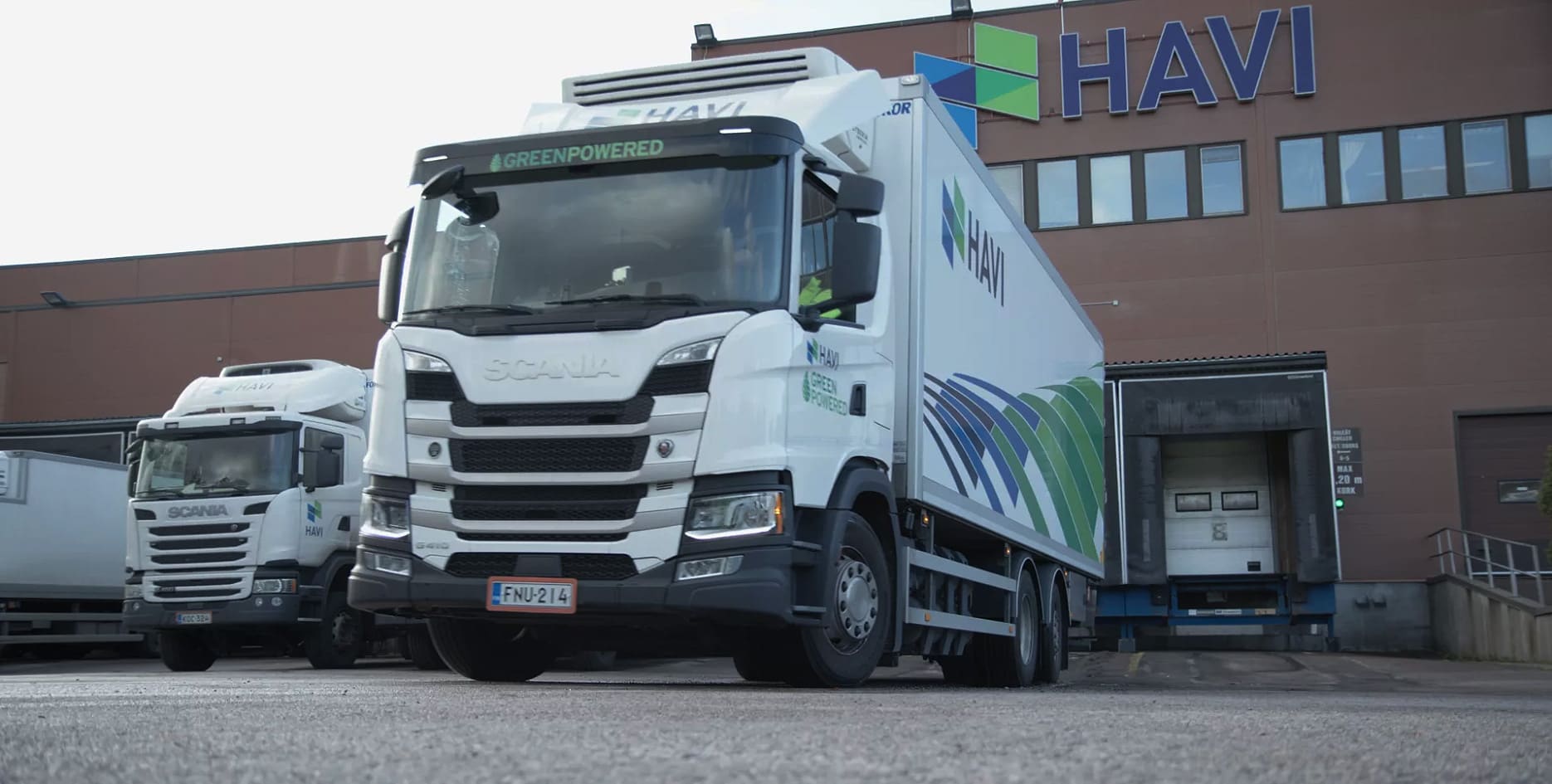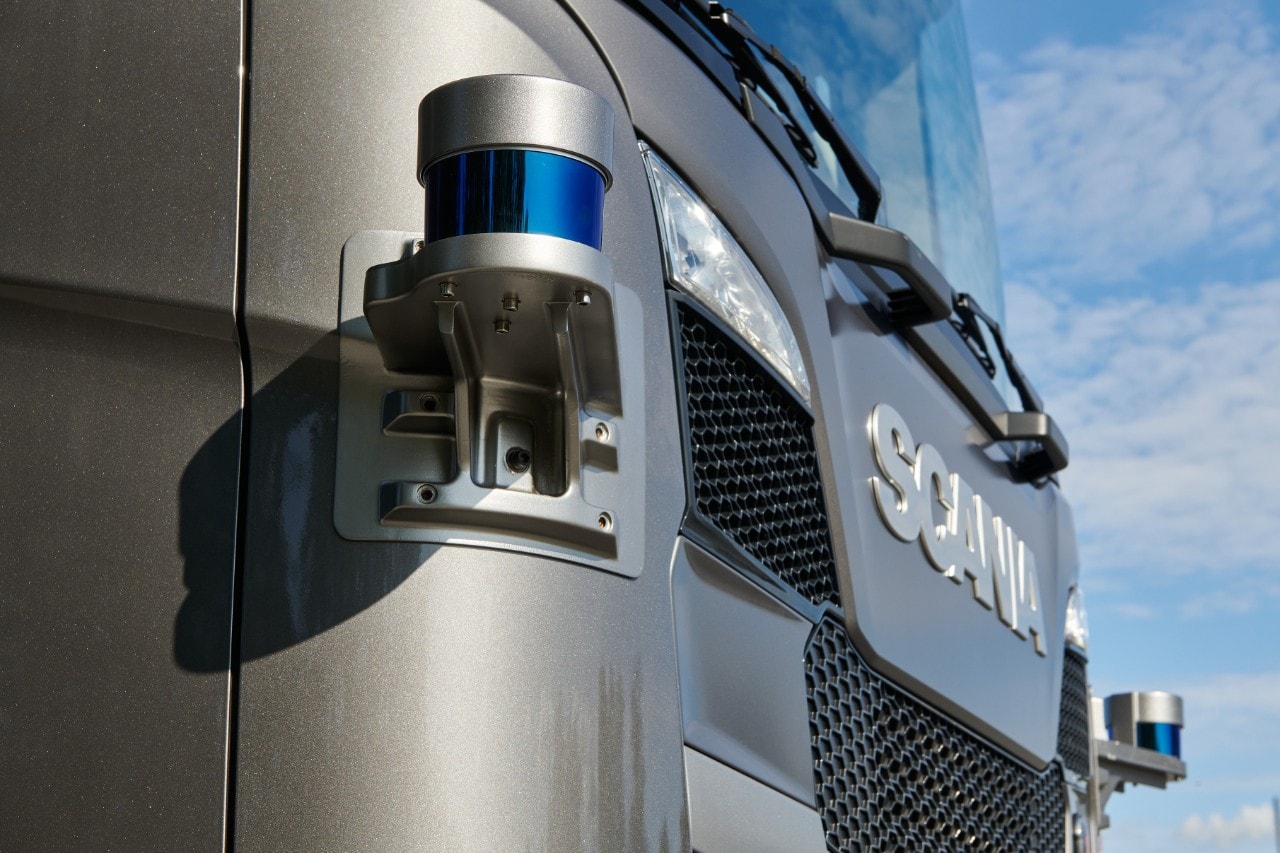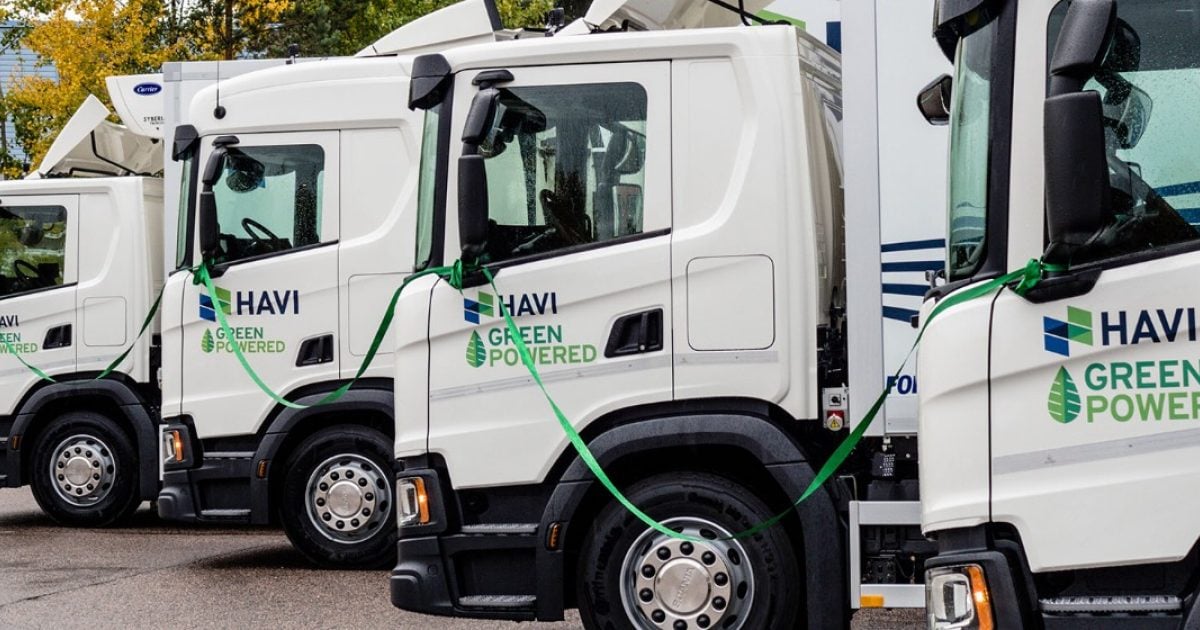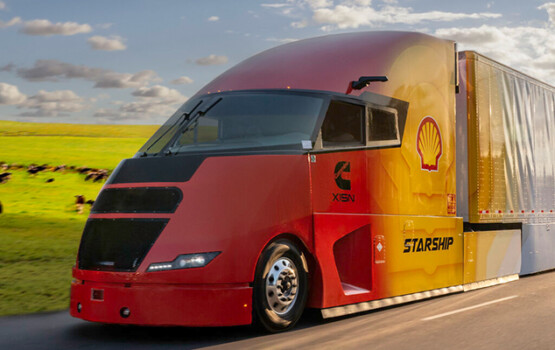Portal for more climate-friendly mobility

Evidence of sustainable operation
 Together with Havi Logistics GmbH, a food logistics service provider operating in 37 European countries, the tracking of the use of sustainable fuels is being tested. Source: Gasum
Together with Havi Logistics GmbH, a food logistics service provider operating in 37 European countries, the tracking of the use of sustainable fuels is being tested. Source: Gasum
Swedish truck manufacturer Scania is currently testing a digital solution together with Neste, the Finnish specialist for sustainable fuels. It allows easy tracking and verification of a truck’s use of renewable fuels. The solution involves data from the Scania Fleet Management portal being enriched with fuel emission data provided by Neste. The result: accurate, up-to-date data for reporting on greenhouse gas emissions (GHG) which can also be used for sustainability communication by Scania customers, thereby demonstrating the climate impact achieved through use of renewable Neste fuels as compared to fossil fuels.
Neste and Scania are currently testing the digital solution in cooperation with logistics companies, including Havi Logistics GmbH, a food logistics service provider that operates in 37 European countries. With this transport specialist, Scania previously tested fully autonomous transport under regular traffic conditions between logistics centres – a three-hour journey of around 300 kilometres. The new sustainable fuel solution combines data on where a particular truck is refuelled and how far it has travelled: data is then generated on the climate impact of using Neste MY Renewable Diesel instead of fossil fuel.
 Also with Havi, Scania has also been testing autonomous driving since last autumn on the approximately 300 km route between the logistics centres in the Swedish cities of Södertälje and Jönköpin. Source: Scania
Also with Havi, Scania has also been testing autonomous driving since last autumn on the approximately 300 km route between the logistics centres in the Swedish cities of Södertälje and Jönköpin. Source: Scania
Up until now it has been a major challenge to check the extent to which a truck actually runs on renewable fuel: as in the case of CNG and biogas and also LNG and bio-LNG, the same trucks can be used with both fossil and non-fossil fuels. The common goal of Neste and Scania is for the solution currently being tested to be used by all manufacturers and all types of renewable fuels in the future. “The climate data now runs through the systems digitally, whereas it used to be collected manually from different sources,” says Mats Hultman, head of OEM Partnerships at Neste. “That’s why we started our pilot project by identifying the challenges that transport companies are currently facing in developing fleet sustainability and the reporting this involves.”
Jacob Thärnå, Head of Sustainable Transport at Scania, explains: “Our aim is to drive the transition to a sustainable transport system and create a world of mobility that is better for the economy, society and the environment.” The sustainability expert adds: “We’re confident that data transparency, connectivity and ecosystem partnerships are critical when it comes to accelerating the transformation, given the fact that energy efficiency, electrification, renewable fuels, and intelligent and safe transportation all part of the overall solution.”
 Automatic reporting of actual GHG reductions achieved for customers and them partners is very important to Havi. Source: Scania
Automatic reporting of actual GHG reductions achieved for customers and them partners is very important to Havi. Source: Scania
Havi Logistics GmbH, one of the first testers of this digital solution, aims to achieve net zero emissions by 2050 as well as offering its customers and partners the most transparent supply chain solutions possible. “Since much of our European supply fleet is now powered by alternative powertrains such as electric, biogas and renewable diesel, we’re thrilled at this ground-breaking new digitisation initiative,” said Massimo D’Alessandro, Director Sustainability & Innovation at Havi. “It allows automatic reporting on the GHG reductions actually achieved on behalf of our customers. On a broader scale, deliveries with a demonstrably lower CO2 footprint also have the potential to boost confidence in the industry’s progress towards net zero,” says D’Alessandro. (pd/jas, 28 February 2023)
You might also be interested in

Shell Starship on record hunt
